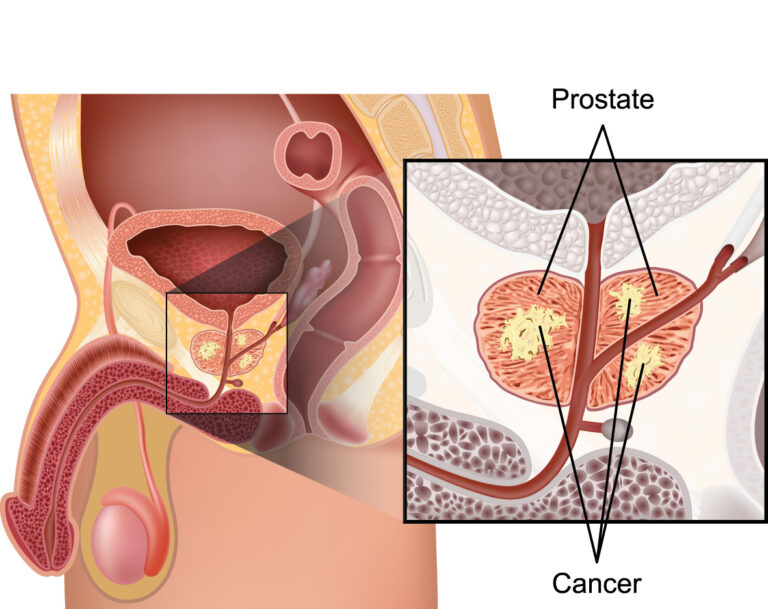The Amazing Benefits of Exercise for Your Prostate Health and Well-Being

The Importance of Exercise for Prostate Health

Prostate health is a critical aspect of men’s overall well-being, and exercise plays a vital role in maintaining its optimal function. Regular physical activity has been shown to have numerous benefits for the prostate, helping to reduce the risk of prostate issues and promoting overall prostate health.
Exercise has been extensively studied in relation to its impact on prostate health, and the findings consistently demonstrate its positive effects. Engaging in regular exercise helps to improve blood circulation throughout the body, including the prostate gland. This increased blood flow delivers necessary oxygen and nutrients, promoting the health and function of the prostate. Furthermore, exercise has been found to reduce inflammation in the body, which is a key factor in prostate disorders. By reducing inflammation, exercise acts as a protective measure against various prostate conditions.
Incorporating regular exercise into your routine not only helps to maintain a healthy prostate but also contributes to your overall physical and mental well-being. Stay tuned as we delve deeper into the specific benefits of exercise for prostate health, providing you with actionable tips to incorporate exercise into your prostate health routine.
The Role of Exercise in Preventing Prostate Issues
Regular exercise plays a crucial role in preventing prostate issues and maintaining overall prostate health. Engaging in physical activity on a consistent basis has been shown to have numerous benefits for the prostate gland. One way exercise helps prevent prostate issues is by improving blood flow and circulation to the prostate. This increased blood flow ensures that the prostate receives a sufficient supply of oxygen and nutrients, promoting its optimal functioning. In addition, exercise has been found to lower levels of inflammation in the body, which is particularly important in reducing the risk of prostate issues such as prostatitis. By reducing inflammation, exercise helps to protect the prostate from damage and maintain its healthy condition.
Moreover, exercise is known to have a positive impact on hormone levels, including those related to prostate health. Regular physical activity has been linked to a decrease in the levels of certain hormones, such as insulin-like growth factor (IGF-1) and testosterone. Elevated levels of these hormones have been associated with an increased risk of developing prostate issues, including prostate cancer. By engaging in exercise, individuals can help regulate these hormone levels and potentially lower their risk of prostate-related conditions.
Furthermore, exercise can contribute to maintaining a healthy body weight, which is another important factor in preventing prostate issues. Obesity and excess body weight have been associated with an increased risk of prostate cancer and other prostate-related conditions. Engaging in regular exercise helps individuals maintain a healthy weight, reducing the burden on the prostate gland and decreasing the risk of developing problems.
In conclusion, exercise plays a vital role in preventing prostate issues by improving blood flow and circulation to the prostate, reducing inflammation, regulating hormone levels, and maintaining a healthy body weight. By incorporating exercise into their daily routine, individuals can take proactive steps to protect their prostate and promote optimal prostate health.
How Exercise Can Reduce the Risk of Prostate Cancer
Prostate cancer remains one of the most common types of cancer among men worldwide. While there is no foolproof method to prevent prostate cancer, research suggests that regular exercise may play a crucial role in reducing the risk of developing this disease.
Several studies have explored the link between exercise and prostate cancer risk. One study conducted by Harvard University found that men who engaged in vigorous physical activity had a 30% lower risk of developing advanced prostate cancer compared to those who engaged in little to no exercise. This suggests that engaging in activities that raise the heart rate and increase sweating, such as running or playing sports, can have a protective effect against prostate cancer. Additionally, another study published in the Journal of the National Cancer Institute found that men who had higher levels of physical activity, both in their leisure time and occupation, had a lower risk of developing prostate cancer overall.
These findings highlight the potential preventive benefits of exercise for prostate health. However, it is important to note that further research is still needed to fully understand the mechanisms behind this protective effect. Nonetheless, incorporating regular physical activity into one’s routine is a simple and accessible way for men to potentially reduce their risk of developing prostate cancer.
Exercise as a Natural Approach to Prostate Health
Exercise has long been recognized as a cornerstone of a healthy lifestyle, and its benefits extend beyond cardiovascular health and weight management. When it comes to prostate health, exercise has been shown to play a pivotal role in supporting overall well-being. Engaging in regular physical activity has been linked to a reduced risk of prostate issues, including prostate cancer.
Studies have consistently demonstrated that men who maintain an active lifestyle are less likely to develop prostate cancer. In fact, research suggests that engaging in moderate to vigorous exercise for at least 30 minutes most days of the week can lower the risk of prostate cancer by up to 30%. This may be attributed to the positive effects of exercise on various physiological processes, including hormonal regulation, immune function, and inflammation reduction. While the exact mechanisms behind this protective effect are not yet fully understood, the evidence is clear that exercise is a natural approach to supporting prostate health.
The Impact of Exercise on Prostate Function
Regular exercise has been shown to have a positive impact on prostate function. Studies suggest that engaging in physical activity can potentially help reduce the risk of prostate issues and improve overall prostate health. One study published in the journal Cancer Epidemiology, Biomarkers & Prevention found that men who engaged in moderate to vigorous exercise at least three hours per week had a lower risk of developing prostate cancer compared to those who were less active. This highlights the potential benefits of exercise in preventing prostate conditions and maintaining optimal prostate function.
Furthermore, exercise has also been associated with a decreased risk of prostate enlargement, a common condition known as benign prostatic hyperplasia (BPH). BPH can cause bothersome urinary symptoms in men as they age. Research conducted at the Harvard School of Public Health found that men who engaged in moderate physical activity, such as brisk walking, had a reduced risk of developing BPH. Regular exercise is believed to have a positive effect on hormone levels, inflammation, and blood flow in the prostate, which can help maintain its proper function and reduce the risk of prostate enlargement.
Incorporating exercise into your daily routine could have a significant impact on your prostate health. However, it is important to note that exercise alone cannot guarantee a perfectly healthy prostate. It should be complemented by a balanced diet, regular screenings, and other preventive measures. Consult with your healthcare provider to develop a personalized exercise plan that suits your individual needs and abilities. By prioritizing exercise and making it a part of your prostate health routine, you can contribute to maintaining optimal prostate function and potentially reduce the risk of prostate-related issues.
Exercise and Its Effect on Prostate Enlargement
Prostate enlargement, also known as benign prostatic hyperplasia (BPH), is a common condition that affects many men as they age. It occurs when the prostate gland grows in size and puts pressure on the urethra, leading to urinary symptoms such as frequent urination, weak urine flow, and difficulty emptying the bladder completely. While the exact cause of prostate enlargement is still unknown, research suggests that regular exercise may play a role in reducing the risk and severity of this condition.
Several studies have shown that engaging in physical activity can have a positive effect on prostate health, including the prevention and management of prostate enlargement. Exercise helps to improve overall cardiovascular health and blood circulation, which in turn can enhance prostate function. Additionally, regular physical activity has been shown to reduce inflammation, lower levels of certain hormones such as testosterone and estrogen, and regulate insulin levels – all of which may contribute to the development and progression of prostate enlargement.
Although exercise alone may not completely prevent or cure prostate enlargement, incorporating regular physical activity into your daily routine can have significant benefits for your overall prostate health. It is important to consult with your healthcare provider before starting any new exercise program, as they can provide personalized recommendations based on your individual needs and medical history. By taking a proactive approach to your prostate health and including exercise as part of your lifestyle, you may be able to reduce the risk and severity of prostate enlargement, as well as improve your overall well-being.
The Connection Between Regular Physical Activity and Prostate Health
Regular physical activity plays a vital role in maintaining overall health and well-being. It has been found to have a positive impact on various aspects of our body, including the prostate. Studies have shown that engaging in regular exercise can significantly reduce the risk of developing prostate-related issues, such as prostate cancer and enlargement.
Exercise helps to improve blood circulation throughout the body, including the prostate gland. This enhanced blood flow allows for better delivery of essential nutrients and oxygen to the prostate, promoting its optimal functioning. Moreover, regular physical activity helps to regulate hormone levels, such as testosterone, which is linked to prostate health. By maintaining a healthy balance of hormones, exercise contributes to the prevention of prostate problems.
Furthermore, engaging in regular exercise has been found to have a positive influence on weight management. Obesity and excess body fat have been associated with an increased risk of prostate-related conditions. By maintaining a healthy weight through exercise, individuals can reduce the risk of developing such issues.
In conclusion, regular physical activity is not only beneficial for overall health but also plays a crucial role in prostate health. By improving blood circulation, regulating hormone levels, and promoting weight management, exercise acts as a natural approach to prevent prostate-related problems. Incorporating regular exercise into one’s daily routine may significantly reduce the risk of developing prostate issues and promote optimal prostate function.
Exercise and Its Role in Managing Prostate Symptoms
Prostate symptoms can greatly impact a man’s quality of life, and exercise has been shown to play a significant role in managing these symptoms. Regular physical activity can help alleviate prostate-related discomfort and improve overall well-being.
Studies have shown that exercise can help reduce lower urinary tract symptoms commonly associated with prostate issues, such as frequent urination, weak urine flow, and the urgent need to urinate. Engaging in moderate-intensity activities like brisk walking, cycling, or swimming can effectively improve these symptoms and promote better urinary function. Additionally, exercise may help maintain a healthy weight, which is important for managing prostate symptoms as obesity has been linked to an increased risk of prostate issues.
Moreover, exercise can have a positive impact on prostate-related pain. Research suggests that physical activity can help relieve prostatitis symptoms, a condition characterized by inflammation of the prostate gland. Regular exercise may reduce pain levels and discomfort associated with prostatitis, improving overall quality of life for individuals suffering from this condition.
It is important to note that while exercise can play a valuable role in managing prostate symptoms, it is always recommended to consult with a healthcare professional before starting any new exercise regimen. They can provide personalized guidance based on an individual’s specific condition, ensuring safe and effective management of prostate symptoms through exercise.
The Benefits of Exercise for Prostate Health After Treatment
After undergoing treatment for prostate health issues, such as prostate cancer or prostate enlargement, regular exercise can play a significant role in improving overall prostate health and enhancing recovery. Exercise has been shown to offer several benefits in this regard.
Firstly, exercise can help improve overall physical fitness and strength, which can aid in the recovery process after prostate treatment. Engaging in regular physical activity can increase muscle mass, improve bone density, and enhance cardiovascular health, all of which are essential for a speedy recovery.
Additionally, exercise has been found to enhance mental well-being and reduce the risk of depression and anxiety commonly experienced after prostate treatment. Physical activity stimulates the release of endorphins, also known as “feel-good” hormones, which can help elevate mood and improve overall quality of life. Taking part in activities that one enjoys, such as swimming, jogging, or cycling, can provide a much-needed sense of normalcy and contribute to a positive outlook during the recovery period.
Furthermore, some scientific studies suggest that exercise may have specific benefits for prostate health. For instance, research indicates that regular exercise could potentially lower the risk of prostate cancer recurrence in individuals who have undergone treatment. Although more studies are needed to establish a direct link, initial findings are promising and suggest that exercise may play a crucial role in preventing the return of prostate cancer after treatment.
In conclusion, incorporating exercise into the prostate health routine after treatment can have numerous benefits. From improving physical fitness and mental well-being to potentially reducing the risk of prostate cancer recurrence, regular physical activity is an essential aspect of maintaining a healthy prostate and promoting overall recovery. It is important for individuals to consult with their healthcare provider to determine the most suitable exercise regimen for their specific case and to gradually increase activity levels as recommended.
• Exercise can improve overall physical fitness and strength, aiding in the recovery process after prostate treatment.
• Engaging in regular physical activity can increase muscle mass, improve bone density, and enhance cardiovascular health.
• Exercise has been found to enhance mental well-being and reduce the risk of depression and anxiety commonly experienced after prostate treatment.
• Physical activity stimulates the release of endorphins, also known as “feel-good” hormones, which can help elevate mood and improve overall quality of life.
• Taking part in activities that one enjoys, such as swimming, jogging, or cycling, can provide a much-needed sense of normalcy during the recovery period.
• Some studies suggest that exercise may have specific benefits for prostate health by potentially lowering the risk of prostate cancer recurrence.
• Although more research is needed to establish a direct link between exercise and reduced cancer recurrence rates, initial findings are promising.
• Incorporating exercise into the prostate health routine after treatment is essential for maintaining a healthy prostate and promoting overall recovery.
• It is important for individuals to consult with their healthcare provider to determine the most suitable exercise regimen for their specific case.
Exercise as a Complementary Therapy for Prostate Conditions
Exercise has long been recognized as an effective complementary therapy for managing prostate conditions. Research suggests that regular physical activity can help improve overall prostate health and reduce the risk of developing prostate issues. One study found that men who engaged in moderate-intensity exercise had a lower risk of prostate enlargement compared to sedentary individuals.
Exercise may also play a role in managing symptoms associated with prostate conditions such as urinary difficulties. Strengthening the pelvic floor muscles through exercises like Kegels can help improve urinary control and reduce incontinence. Additionally, aerobic exercises that increase cardiovascular fitness can have a positive impact on overall prostate function. While exercise alone may not be a cure for prostate conditions, it can certainly be a valuable component of a comprehensive treatment plan.
The Link Between Exercise and Improved Prostate Function
Exercise plays a crucial role in maintaining overall health, and its impact on prostate function is no exception. Several studies have shown a positive correlation between regular physical activity and improved prostate function. Exercise helps to enhance blood flow to the prostate gland, ensuring optimal nutrient supply and waste removal. This improved circulation can contribute to a healthier prostate by promoting the delivery of oxygen and essential nutrients while flushing out toxins and metabolic byproducts.
Furthermore, engaging in regular exercise has shown to have a beneficial effect on hormonal balance, specifically in relation to prostate health. Physical activity has been found to help regulate testosterone levels, reducing the risk of imbalances that could potentially lead to prostate issues. Additionally, exercise can help lower the levels of certain growth factors linked to prostate enlargement and cancer development. By incorporating regular exercise into your routine, you can take proactive steps to promote improved prostate function and reduce your risk of developing prostate-related conditions.
How Exercise Can Help Maintain a Healthy Prostate
Maintaining a healthy prostate is essential for men’s overall well-being. Regular exercise has been found to play a crucial role in promoting prostate health. Engaging in physical activity helps improve blood circulation, which in turn enhances the delivery of vital nutrients and oxygen to prostate cells. This increased blood flow supports the organ’s optimal functioning, reducing the risk of various prostate issues.
Exercise also aids in weight management, which is another crucial aspect of maintaining a healthy prostate. Obesity has been linked to an increased risk of prostate problems, including enlargement and cancer. By engaging in regular exercise, individuals can effectively manage their weight, reducing the risk of these conditions. Furthermore, exercise has been shown to support hormonal balance, preventing imbalances that can contribute to prostate issues.
The benefits of exercise on prostate health extend beyond physical well-being. Regular physical activity has also been associated with improvements in mental health, stress reduction, and overall quality of life. By including exercise as part of a comprehensive prostate health routine, individuals can promote both their physical and mental well-being, contributing to a healthier and happier life.
Exercise and Its Potential to Enhance Prostate Health Long-Term
Regular exercise has long been recognized as an essential component of a healthy lifestyle. Not only does it benefit overall physical fitness, but it also plays a crucial role in enhancing specific aspects of health, including prostate health. Numerous studies have suggested that exercise may have the potential to enhance prostate health long-term.
One potential mechanism through which exercise may promote prostate health is by reducing inflammation in the prostate gland. Chronic inflammation has been linked to an increased risk of developing prostate conditions, such as prostatitis and benign prostatic hyperplasia (BPH). Engaging in regular physical activity has been found to decrease levels of inflammatory markers in the body, potentially mitigating inflammation within the prostate gland. Furthermore, exercise may also improve blood flow to the prostate, supplying essential nutrients and oxygen to the gland, which contributes to its overall health and function.
Another way in which exercise may enhance prostate health is by balancing hormone levels. Research has demonstrated that physical activity can positively influence hormone regulation, including testosterone. Testosterone is an androgen hormone that plays a vital role in prostate function. By engaging in regular exercise, individuals may experience favorable changes in testosterone levels, potentially reducing the risk of developing prostate conditions, such as prostate cancer.
In conclusion, regular exercise holds promising potential in enhancing prostate health in the long term. By reducing inflammation and balancing hormone levels, exercise may contribute to the overall well-being of the prostate gland. However, further research is still needed to establish the specific types, duration, and intensities of exercise that yield the optimal benefits for prostate health. As with any lifestyle modification, it is crucial to consult with a healthcare professional before initiating a new exercise routine, particularly for individuals with existing prostate conditions.
Tips for Incorporating Exercise into Your Prostate Health Routine
Incorporating exercise into your prostate health routine can have numerous benefits for your overall well-being. Here are a few tips to help you get started on a regular exercise regimen:
1. Consult with your healthcare provider: Before initiating any exercise plan, it is essential to consult with your healthcare provider, especially if you have any underlying medical conditions. They can assess your overall health and provide guidance on the most suitable exercises for you.
2. Start gradually: If you are new to exercise or have been inactive for a while, it’s crucial to start slowly and gradually increase intensity and duration over time. Begin with low-impact activities such as brisk walking or swimming, and gradually incorporate more challenging exercises as your fitness level improves.
Remember, consistency is key when it comes to exercise. Aim for at least 150 minutes of moderate-intensity aerobic activity per week, spread across several days. Additionally, incorporate strength training exercises at least twice a week to help maintain muscle mass and enhance overall physical function. By incorporating exercise into your prostate health routine, you can take significant steps towards improving your overall well-being.
Why is exercise important for prostate health?
Exercise is important for prostate health as it helps in improving blood circulation, reducing inflammation, maintaining a healthy weight, and boosting the immune system, all of which contribute to a healthy prostate.
How does exercise prevent prostate issues?
Regular exercise helps in reducing the risk of developing prostate issues such as prostatitis and benign prostatic hyperplasia (BPH). It improves overall prostate health by reducing inflammation and promoting proper prostate function.
Can exercise reduce the risk of prostate cancer?
While exercise alone cannot guarantee prevention of prostate cancer, it has been shown to lower the risk. Regular physical activity, especially vigorous exercises like running or cycling, can help reduce the risk of developing prostate cancer.
Is exercise a natural approach to maintaining prostate health?
Yes, exercise is a natural approach to maintaining prostate health. It does not involve any medication or invasive procedures, and it can be incorporated into your daily routine easily.
How does exercise impact prostate function?
Exercise improves blood flow to the prostate gland, which helps in maintaining its proper function. It also helps in reducing inflammation and promoting overall prostate health.
Does exercise affect prostate enlargement (BPH)?
Exercise can help manage symptoms of prostate enlargement, also known as benign prostatic hyperplasia (BPH). Regular physical activity can improve urinary flow and reduce the severity of BPH symptoms.
What is the connection between regular physical activity and prostate health?
Regular physical activity is strongly linked to improved prostate health. It reduces the risk of developing prostate issues, including cancer, and helps in maintaining proper prostate function.
How does exercise help in managing prostate symptoms?
Exercise helps in managing prostate symptoms by improving overall prostate health, reducing inflammation, and promoting proper blood circulation. It can alleviate symptoms associated with prostate issues, such as urinary difficulties.
Are there any benefits of exercise for prostate health after treatment?
Yes, exercise can provide several benefits for prostate health after treatment. It aids in recovery, improves overall well-being, helps manage treatment side effects, and reduces the risk of recurrence.
Can exercise be used as a complementary therapy for prostate conditions?
Yes, exercise can be used as a complementary therapy for prostate conditions. It can be combined with medical treatments to enhance their effectiveness and improve overall prostate health.
Is there a link between exercise and improved prostate function?
Yes, there is a link between exercise and improved prostate function. Regular physical activity promotes proper blood flow to the prostate, reduces inflammation, and supports overall prostate health.
How can exercise help maintain a healthy prostate?
Exercise helps maintain a healthy prostate by improving blood circulation, reducing inflammation, managing weight, and supporting proper prostate function. It contributes to overall prostate health and reduces the risk of developing prostate issues.
Can exercise enhance prostate health in the long term?
Yes, exercise has the potential to enhance prostate health in the long term. Regular physical activity supports a healthy prostate by improving blood flow, reducing inflammation, and promoting overall prostate function.
What are some tips for incorporating exercise into a prostate health routine?
Some tips for incorporating exercise into your prostate health routine include starting slowly and gradually increasing intensity, choosing activities that you enjoy, including both aerobic and strength training exercises, and consulting with a healthcare professional for personalized recommendations.






